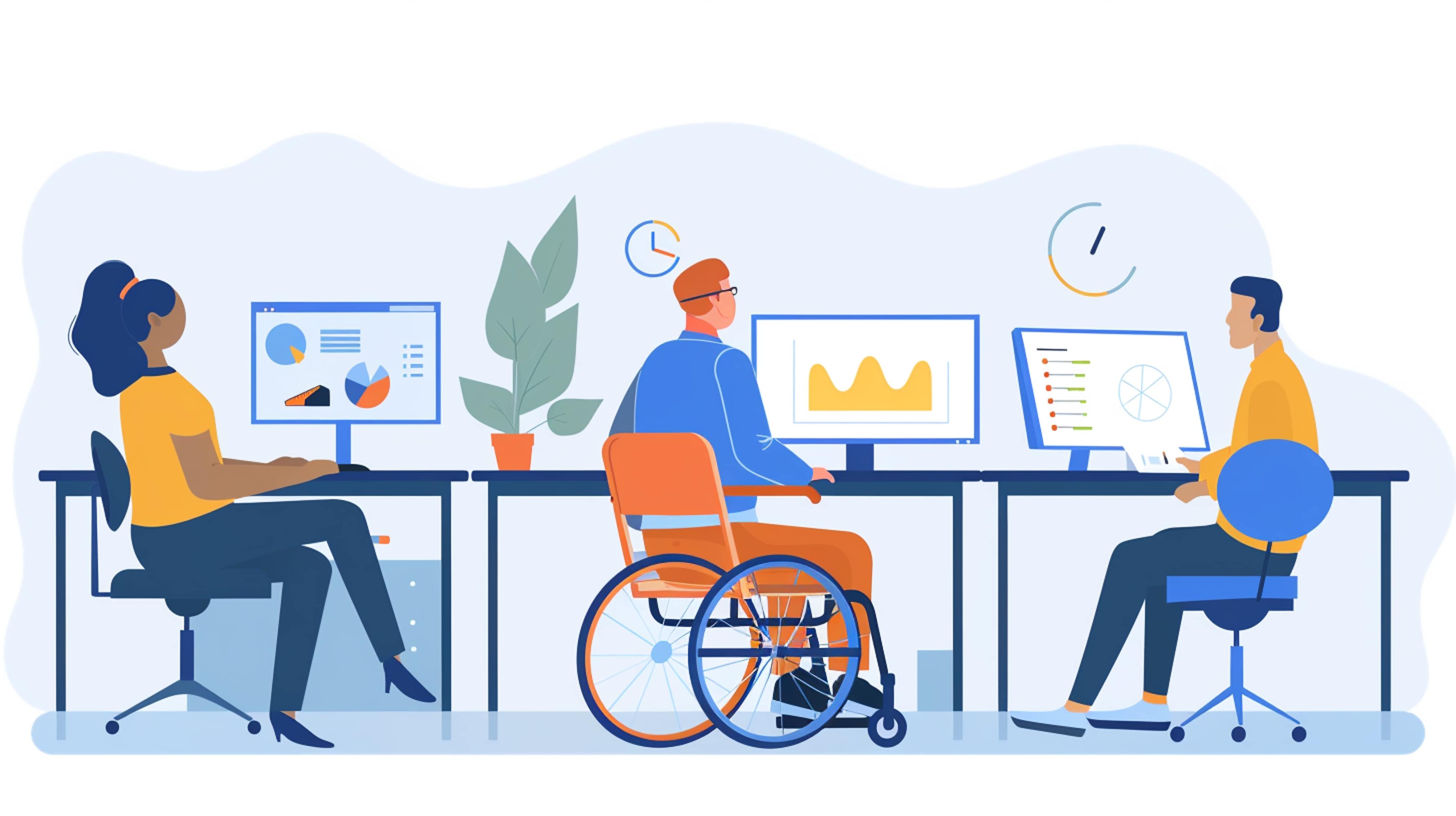The Accessibility of Remote Proctoring for Students with Disabilities

Our earlier blog discussed the need to make remote proctoring a stress-free student experience. This includes ensuring that all students, including the ones with special needs, are accommodated and treated with equity by the remote proctoring process.
I had a classmate in school who had a congenital hearing impairment. She was an exceptionally bright girl with a penchant for science. She participated in and made elaborate anatomical charts and models for every science fair. Whenever we were asked what we would like to become in class, she would quip, ‘Doctor!’ without hesitation.
As I moved cities and, consequently, schools, we lost touch. Many years later, I ran into her in a mall. I was in college pursuing a degree in Engineering at the time. When I inquired about her, she despondently told me that she had to drop out of college as she found it very hard to cope, given her disability. While she tried her best, the system needed more functions to accommodate students like her with lectures and viva voce exam formats. I remember walking out of there with a heavy heart and a sense of unfairness for her situation. While I couldn’t quite put into words what I was disappointed in, now I know that it was the lack of Accessibility that bothered me.
What does ‘Accessibility’ in Education mean?
While Accessibility is a blanket term that essentially means removing barriers or providing the means to engage with content in education, Accessibility offers all students, regardless of their physical or cognitive abilities, equal opportunities to learn and succeed. For students with disabilities, this includes having access to the necessary tools and accommodations to participate fully in all educational activities, including assessments.
Almost all of us have been witness to someone with a disability. According to the World Health Organization, an estimated 1.3 billion people – or 16% of the global population – experience a significant disability today. Ensuring that disabled students are not disadvantaged is crucial for promoting inclusive education.
Challenges of Remote Proctoring for Students with Disabilities
Remote proctoring technology should have accommodations and an intuitive interface that helps all students navigate with ease. This includes features like assistive navigation, multi-language support, audio instructions, and adaptive devices that can help level the playing field. Additionally, educators should account for the potential impact of remote proctoring on students’ access to resources and must make alternative arrangements for students who may face technological or logistical barriers.
- Physical Disabilities
Students with physical disabilities may face challenges with remote proctoring that require the use of assistive technologies. For example, a student with limited hand mobility might rely on voice recognition software to interact with their computer. Remote proctoring systems, however, often flag unusual behaviors or sounds as potential cheating, which can lead to unfair scrutiny or interruptions during the exam. - Visual Impairments
Visually impaired students typically use screen readers or magnification software to navigate digital content. Many remote proctoring systems rely on visual monitoring, which can be problematic for these students. Additionally, if the proctoring software is not compatible with screen readers, visually impaired students may struggle to access exam materials or the proctoring interface itself. - Hearing Impairments
Students with hearing impairments might find it challenging to engage with proctors who communicate via audio. If the proctoring system includes verbal instructions or audio cues, these students might miss essential information. Furthermore, automated systems that detect sound to prevent cheating might not be accessible for students who rely on visual or written instructions. - Cognitive and Learning Disabilities
Students with cognitive or learning disabilities may require additional time or specific accommodations, such as breaks or alternative formats for exam questions. Remote proctoring systems that strictly adhere to time limits or lack flexibility in test administration can create unnecessary stress and barriers for these students. Additionally, the presence of a virtual proctor might heighten anxiety, exacerbating their difficulties.
Best Practices for Accessible Remote Proctoring
To address these challenges, educational institutions and technology providers need to adopt best practices that prioritize accessibility in remote proctoring.
- Collaboration with Disability Services
Institutions should collaborate closely with medical professionals and disability services to understand the specific needs of their students. This collaboration can inform the selection and customization of proctoring technologies to ensure they accommodate a wide range of disabilities. - Inclusive Design and Usability Testing
Proctoring software should be designed with inclusivity in mind from the outset. This involves engaging users with disabilities in the design and testing phases to identify and address potential accessibility issues. Regular usability testing can help ensure that the software remains accessible as it evolves. - AI-Powered Help Tools
AI-powered tools can be used for assistance during the exam. Students can use these tools to translate text into speech in the case of visually impaired students or to convert speech into text in the case of hearing-impaired students. - Compatibility with Assistive Technologies
Remote proctoring systems must be compatible with various assistive technologies, such as screen readers, voice recognition software, and alternative input devices. Ensuring compatibility can prevent many of the barriers that students with disabilities might face. - Accommodating Flexibility
Institutions should ensure that remote proctoring systems can accommodate individual needs, such as extended time, frequent breaks, or alternative question formats. This flexibility can help create a more equitable testing environment for students with disabilities. - Clear Communication and Training
Clear communication about the remote proctoring process and available accommodations is essential. Providing students with detailed instructions and training on how to use the proctoring software can alleviate anxiety and ensure they are prepared on the day of the exam. Institutions should also offer technical support to address any issues that arise during the exam. - Privacy and Ethical Considerations
Privacy is a significant concern with remote proctoring, especially for students with disabilities who might need to use assistive devices or require specific accommodations that could be flagged as unusual behavior. Institutions must ensure that proctoring systems comply with privacy regulations and that students’ personal information and accommodations are protected.
Real-World Examples
Several institutions have made strides in making remote proctoring more accessible. For instance, the University of Michigan’s Services for Students with Disabilities (SSD) office works closely with faculty to provide necessary accommodations for remote exams, including extended time and alternative formats.
Conclusion
The shift to remote learning and assessment presents challenges and opportunities for ensuring Accessibility for students with disabilities. While remote proctoring can uphold academic integrity, educational institutions and technology providers must collaborate to make these systems inclusive and offer alternative proctoring methods for students with specific needs. We can create a more equitable educational environment by adopting best practices such as inclusive design, compatibility with assistive technologies, and providing necessary accommodations. Ultimately, the goal should be to ensure that all students, regardless of their abilities, have the opportunity to succeed in their academic pursuits.

